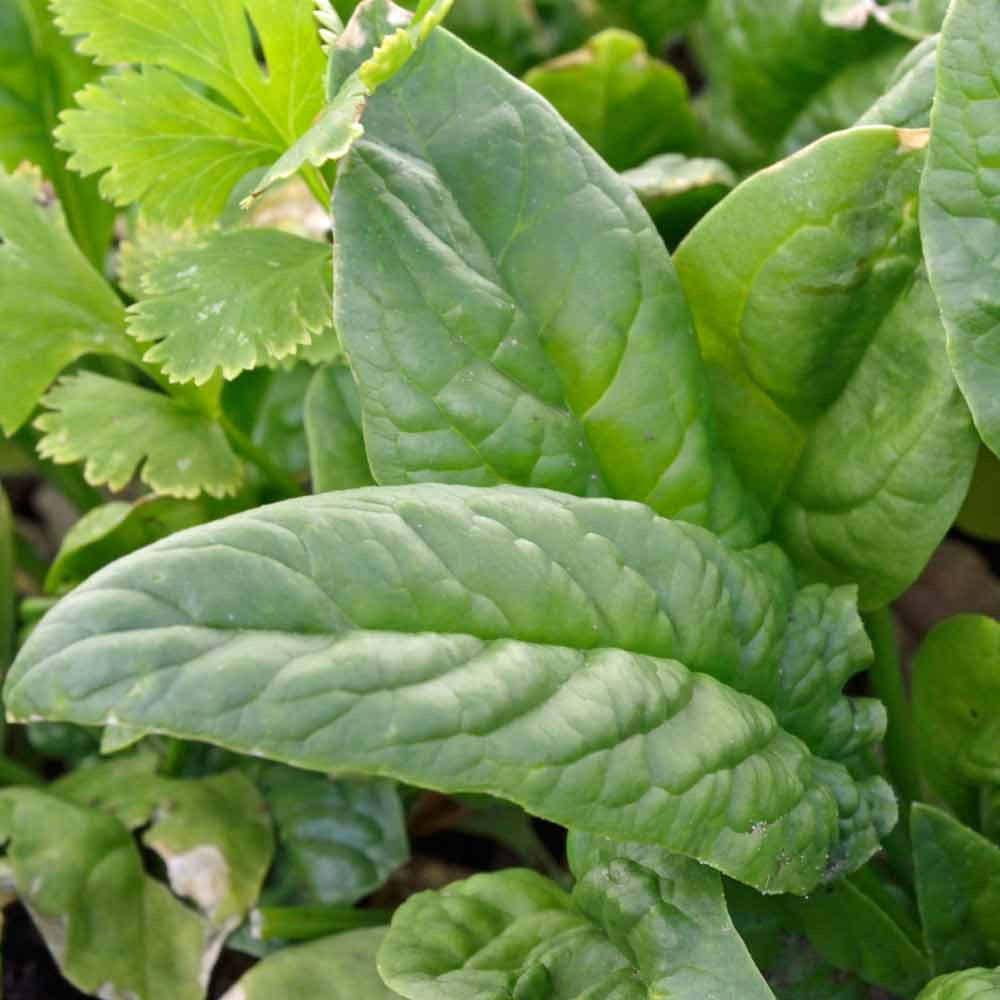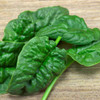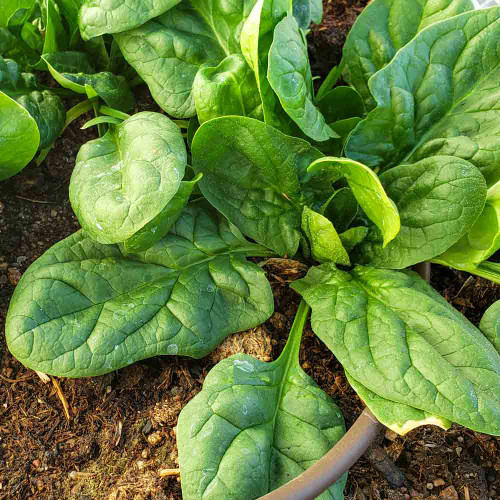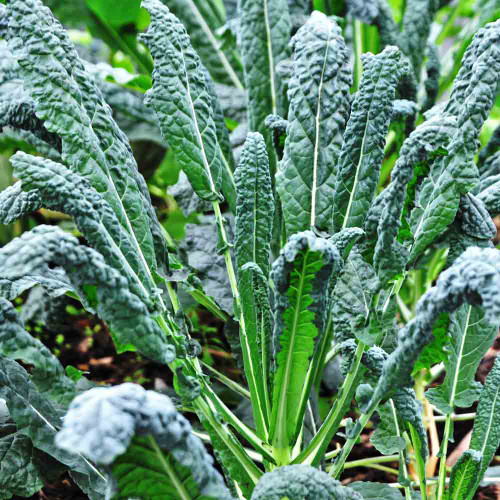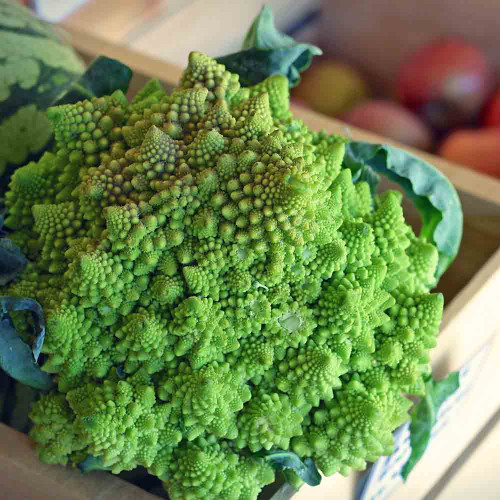Description
Bloomsdale Spinach: The Gardener's Choice for a Long-Lasting, Flavorful Harvest
Bloomsdale Spinach has earned its name of “Long Standing.” It is the last to bolt in the heat yet grows through several fall frosts, gifting you an extended harvest of tender, dark green leaves when other varieties have surrendered. It’s so flavorful that it turns salads into celebrations with rich, sweet, savory notes that are never bitter, perfect for fresh eating or adding depth to cooked dishes.
At a time when spinach was a beloved but fickle crop that quickly bolted in warmer weather, D. Landreth Seed Company introduced Bloomsdale Long Standing Spinach in 1826, named after the Landreth brother’s farm and is still one of the most popular varieties today.
Details
Bloomsdale Long Standing Spinach is a cool-season annual that attracts attention with its vibrant dark green leaves, elegantly crinkled in a savoyed pattern, arranged in a compact rosette, making for an attractive and space-efficient addition to your garden beds. The savoyed leaves add visual interest to your garden and contribute to its unique texture and taste. Take a bite; a robust, earthy flavor with a hint of nuttiness and a pronounced sweetness will greet you. This lovely combination sets Bloomsdale apart from other spinach varieties, offering a richer, more complex taste than your average spinach, leaving a pleasant, slightly tangy finish without a hint of bitterness.
This heirloom variety grows upright and compact, typically reaching a height of 12-18 inches. Its upright nature and tidy growth habit prevent the individual leaves from touching the soil, keeping them clean and reducing the chance of dirt or grit, a welcome feature for any home gardener. As the plant matures, it forms a lush rosette spanning about 10-12 inches in diameter—a perfect fit for both garden beds and containers.
One of Bloomsdale's standout features is its impressive bolt resistance, a game-changer that gives you an extended harvest. While many spinach varieties quickly go to seed (bolt) in the heat, Bloomsdale takes its time. This means you can enjoy more fresh, flavorful spinach gracing your table well into the warmer months. With its generous yields, you'll be amazed at the abundance of tender leaves you can gather from even a small planting.
Whether you're a seasoned gardener or starting, Bloomsdale spinach is a reliable and rewarding choice. Its excellent cold tolerance makes it ideal for early spring and fall planting, extending your growing season. Its high yield ensures you'll have plenty of leaves, even from a limited space. Its adaptability to various growing conditions, thriving in full sun and partial shade, makes it a versatile addition to any garden.
History
Spinach traces its roots to ancient Persia, now modern-day Iran. It is believed that spinach was first cultivated there over 2,000 years ago, valued for its nourishment and versatility in the kitchen. The name “spinach” comes from the word “ispanai,” meaning “green hand” from harvesting fresh leaves. Spinach's popularity spread from Persia, making its way along trade routes to China by the 7th century. In 647 AD, the king of Nepal sent spinach to China as a gift, where it was known as the “Persian vegetable.”
After their conquest in the 8th century, the Moors introduced spinach to Spain in the 11th century. It quickly gained popularity throughout the Iberian Peninsula, prized for its nutrition and ease of cultivation. As trade routes grew between Spain and Italy, spinach traveled along. While spinach was enjoyed throughout Italy, by the 16th century, it was a favorite vegetable of Catherine de' Medici of Florence. When Catherine married King Henry II of France in 1533, she brought her chefs and culinary traditions from her home. As spinach gained popularity in the French court, dishes prepared with it began to be called "à la Florentine" – cooked with butter, garlic, and sometimes cream or cheese – in honor of Catherine's home.
As explorers and traders traveled, spinach seeds found their way to new lands, including the Americas, where they became a staple in gardens and on tables.
The D. Landreth Seed Company developed the Bloomsdale variety in the early 1900s near Bristol, Pennsylvania. It took shape on the grounds of the Landreth brother’s Bloomsdale Farm. Through careful selection and breeding, the breeders selected for specific traits—slow bolting, high yields, cold hardiness, and exceptional flavor. After several years, the result was Bloomsdale spinach, introduced in 1826 in the D. Landreth Seed Company’s seed catalog. It quickly earned favor with home gardeners and commercial growers alike. Even in warmer temperatures, its ability to resist bolting meant a longer harvest season and a more abundant supply of fresh, delicious leaves. Its cold hardiness made it a reliable choice for early spring and fall planting, extending the growing season even further.
Almost two centuries after its introduction, Bloomsdale spinach remains the most popular home garden spinach sold.
Uses
Bloomsdale spinach offers an added dimension for fresh and cooked dishes with its robust, savory, nutty, and subtly sweet flavor profile. Whether you harvest the tender baby leaves or allow them to mature, its versatility shines through. Both stages lend themselves to green salads, where the textured leaves hold dressings and oils, ensuring flavor in every bite.
Beyond salads, Bloomsdale's possibilities are almost endless. Layer the fresh leaves into sandwiches, burgers, and wraps for a nutritious and flavorful boost. Blend them into smoothies for a deep green addition of vitamins and minerals. Or, try shredding them into grain bowls for a satisfying, quick meal.
Sauté the leaves with garlic and olive oil for a satisfying side dish. Stir-fry them with other vegetables for a vibrant and nutritious medley. Stir them into soups and stews for added depth and richness. Combine the leaves into hearty casseroles, stir them into pasta dishes, or use them as a flavorful topping for pizzas.
Aromatic ingredients like garlic, shallots, and caramelized onions enhance its earthy notes. Aged cheeses provide a creamy contrast to its fresh, vegetal taste. Fruits like persimmons, citrus, and strawberries add a touch of sweetness and acidity. And, of course, Bloomsdale spinach pairs wonderfully with a variety of meats, seafood, and eggs.
Companion Planting
Beneficial plantings include strawberries, bush beans, the brassica family (cabbage, kale, Swiss chard), onions, and radishes.
Avoid planting near potatoes and corn.
Pest and Disease Management
Aphids can cluster on the undersides of leaves, causing them to curl and distort. Leaf miners, the larvae of certain flies, create winding tunnels within the leaves, disrupting their growth and appearance. Flea beetles can create small holes that riddle the leaves.
Downy mildew, a fungal infection, may appear as yellow patches on the upper leaf surface and a fuzzy gray growth underneath. Fusarium wilt, another fungal disease, can lead to plant yellowing, wilting, and eventual death.
Home gardeners have several effective solutions at their disposal. Neem oil is a natural insecticide that can control aphids and other soft-bodied insects. Insecticidal soap is also effective against aphids and other pests. Diatomaceous earth, a fine powder made from fossilized diatoms, is a physical barrier to discourage insects like flea beetles.
Encourage beneficial insects like ladybugs and lacewings to control pests and practice crop rotation to disrupt pest and disease life cycles.
Good garden hygiene is crucial. Remove dead leaves and debris from around your spinach plants regularly and provide adequate spacing between plants to promote air circulation and reduce humidity, decreasing fungal growth.
Planting and Growing Tips
Select a planting site that gets full sun to partial shade. Spinach thrives in well-draining, fertile soil rich in organic matter. Amend heavy or compacted soil with compost or aged manure for better drainage and fertility. Some afternoon shade can be beneficial, especially in hot climates.
In the spring, direct sow spinach seed 4-6 weeks before the last expected frost. This gives the plants a head start before the heat of summer arrives. Plant seeds 8-10 weeks before the first anticipated frost for a fall harvest. The cool temperatures of autumn will encourage growth and enhance the flavor of the leaves.
When planting, space the seeds about 4 to 6 inches apart to allow enough room for the plants to grow fully. If you're planting multiple rows, leave 12 to 18 inches of space between them to help with air circulation, weeding, and harvesting.
Consistent moisture is vital for healthy spinach growth. Water your plants regularly, especially during dry periods, ensuring the soil remains moist but not soggy. Overwatering can lead to root rot and other problems.
Harvest Tips
Harvest in the cool morning when the plants are still dewy and crisp for the freshest, most flavorful leaves. This will help preserve their texture and prevent them from wilting quickly.
Start harvesting your Bloomsdale spinach once the plants have developed at least 6-8 true leaves. These young leaves are incredibly tender and packed with flavor. As you harvest, focus on the outer leaves first, allowing the inner leaves to continue growing and producing. This "cut-and-come-again" approach will ensure a continuous supply of fresh spinach throughout the season.
Bloomsdale spinach, while slow to bolt, eventually sends up a flower stalk. Once this happens, the leaves become tough and bitter, signaling the end of the harvest season.

